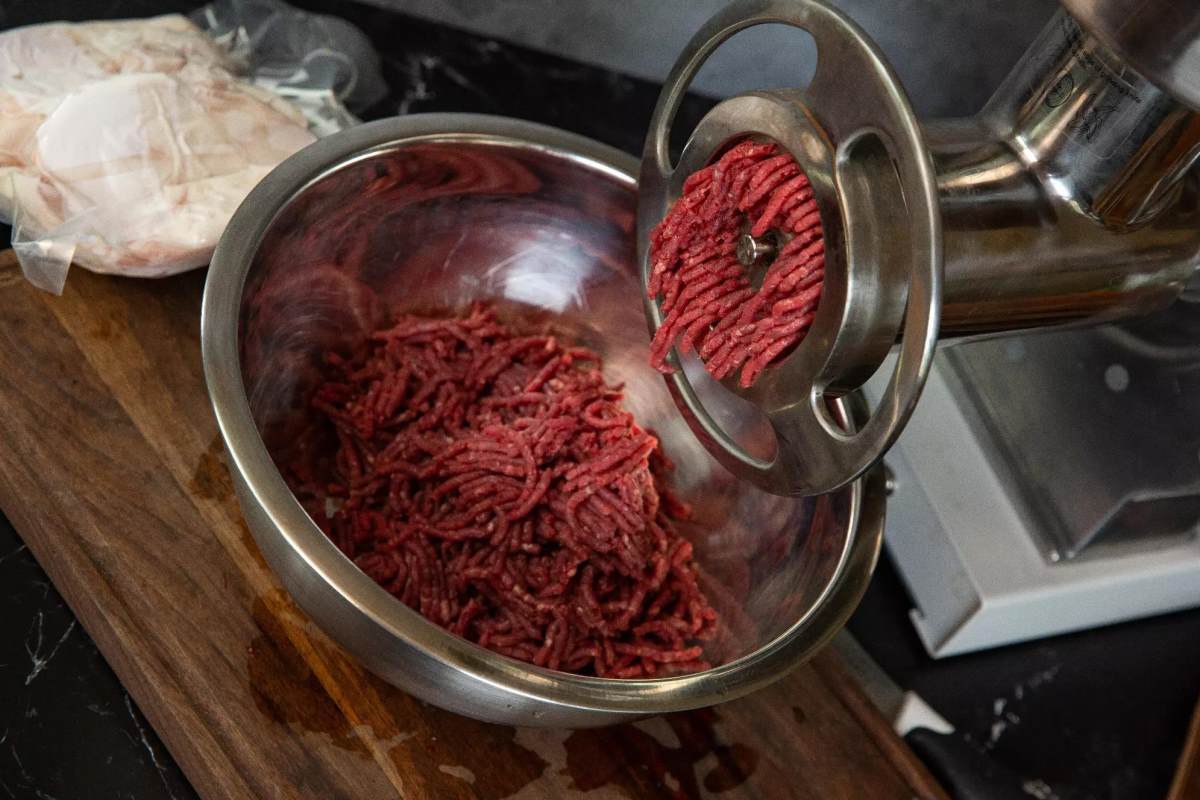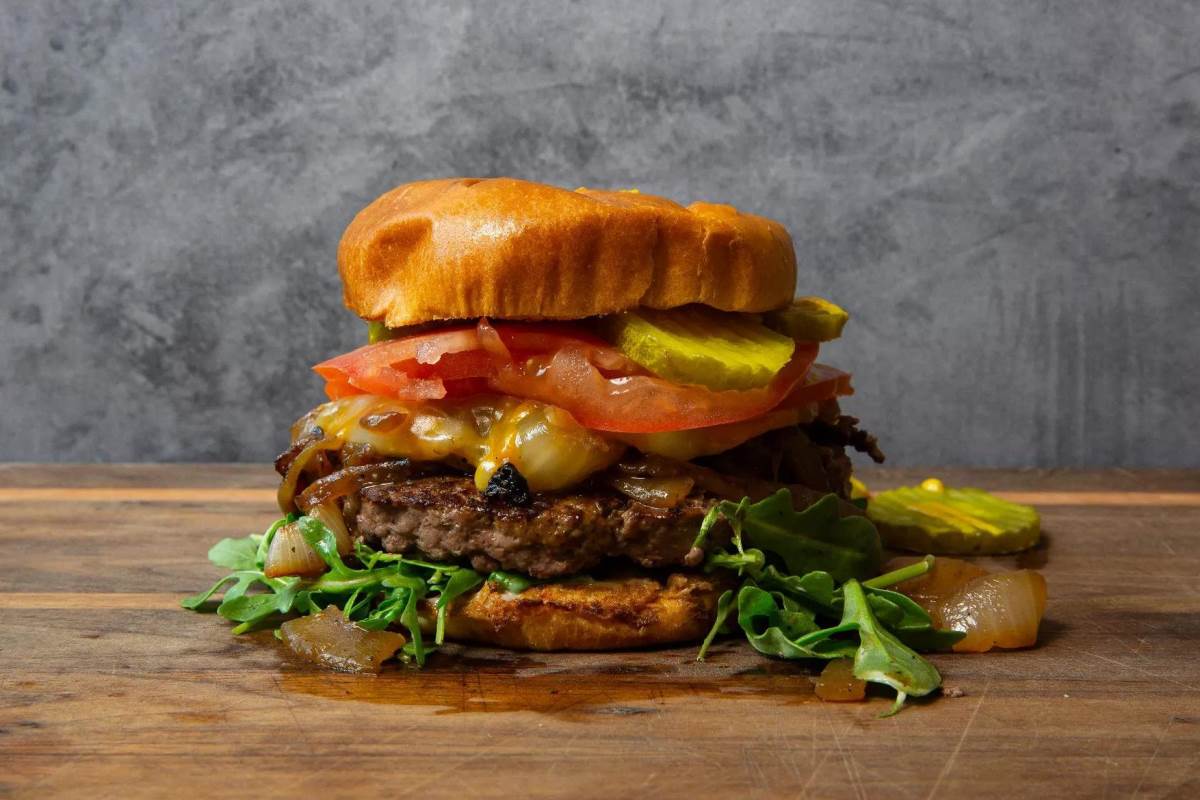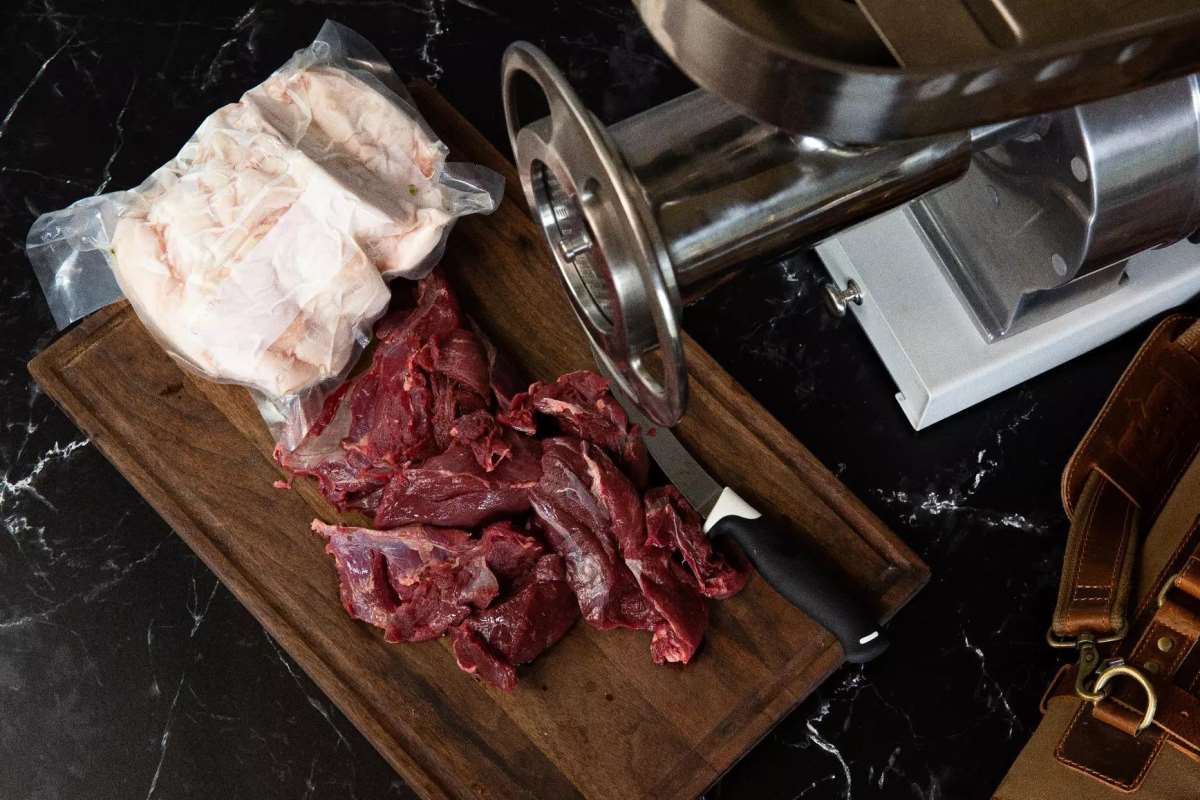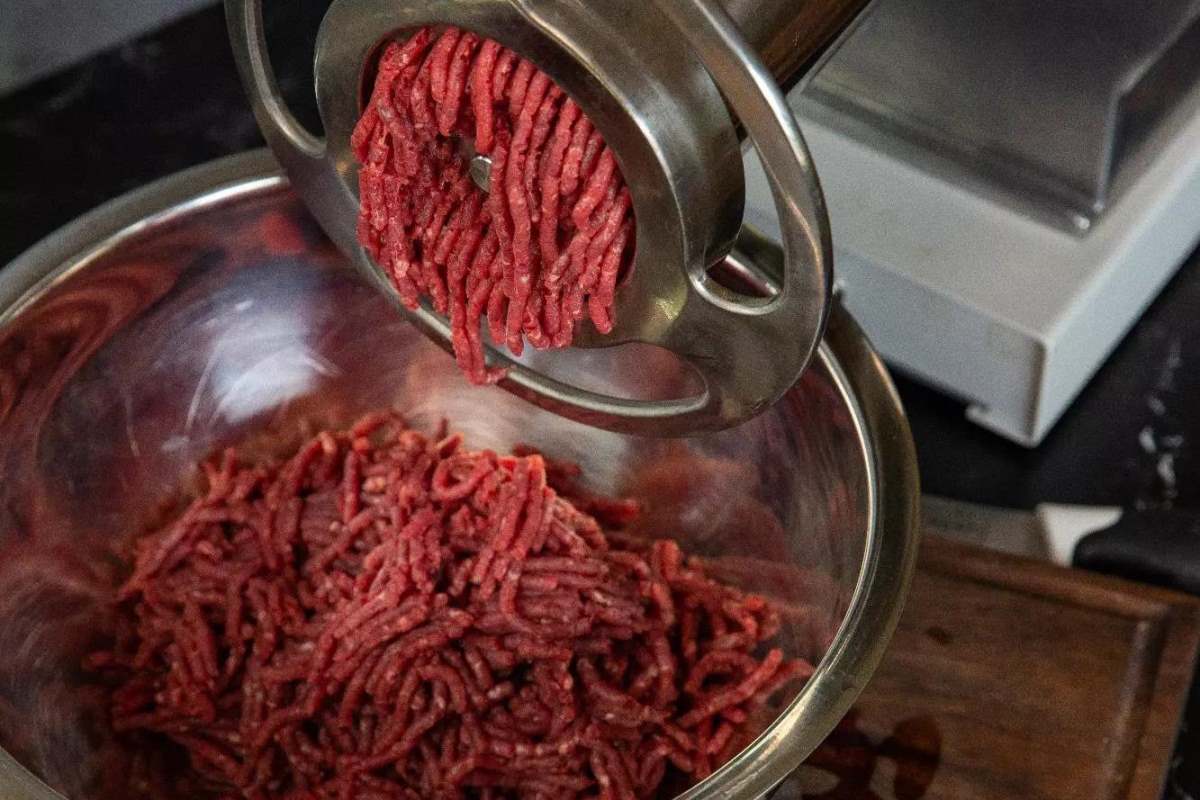
Print Recipe
Ask most anyone who processes their deer on their own and they’ll tell you they add “X” percentage “X” type of fat to their venison grind prior to freezing. Perhaps the reason is they say it cuts down on the “gaminess” or makes for a quick option to pull and cook without having to worry about serving a dry protein. For some, this works, and will always work, but below are a set of reasons why you should never add fat to your venison grind prior to freezing.
TYPE OF FAT MATTERS
In terms of recipes, pork belly fat isn’t the same as backfat. Belly fat (think bacon) is softer, will contribute its own flavor in every dish, while backfat is hard, has a higher melting point, is far more neutral in flavor. Generally speaking, you don’t want to make sausage with pork-belly fat, and you may not want backfat in your hamburger grind. Soft fats will smear more easily, especially if not partially frozen, potentially causing protein extraction to fail during sausage mixing (resulting in dry, crumbly sausage when cooked). Harder fats like backfat may offer more texture in each cheeseburger bite than you might prefer.
Adding pork shoulder (pork butt) to your grind may seem like the perfect compromise but then the percentage of fat in one shoulder will vary from another, which introduces another variable.

FAT PERCERTANGES VARY BASED ON RECIPE
A fresh bratwurst recipe will likely call for less fat compared to Italian sausage or Mexican chorizo. Depending on a sausage recipe, some folks might add as much as 50% fat. I don’t know many people who want to eat a burger that’s 50% fat. All this to say: By initially adding fat to your grind, you will limit with what you can make in the future. Do you instead add a baseline 20%? Perhaps, then do that math down the line when you decide what you’re making, but what type of fat (see above discussion)? Then there is the issue of how thoroughly you have to cook anything with fat prior to serving.
YOU CAN’T SERVE A RARE OR EVEN MEDIUM-RARE HAMBURGER
A deep, deep freeze for 20 days will allegedly kill any trichinosis in domestic pigs, and then are some sources that suggest temps at low as 137 degrees Fahrenheit will also kill any variety of the parasitic worms, even those in wild pigs. Other sources suggest you should cook pork to 145 F, and being able to do so depends on the particular cut and cooking method use. Then others advise 140 but point out the trichinella parasites found in pigs varies from bears and anything bear should reach 160 F minimum.
If you’re like me, a burger served much past 135 F is considered a failure on my part. And though trichinosis in pigs is supposedly rare, I never want to take the chance of serving it to my family, which would mean should I ever add any sort of pig fat to my grind, I cannot serve it under medium (which starts at 140 F). Of course you could consider incorporating beef fat, but that has more pronounced flavor tones. At what point are you eating venison—at what point is it beef?

YOU LOSE THE FLAVOR MOTHER NATURE INTENDED
Yes, sausage needs fat—that is what sausage is and will always be. But for a hamburger? Anything beyond 100% venison is a cyborg burger. If a 100% venison burger tastes “gamey” to you, it’s for any of the following reasons: the deer wasn’t properly processed and kept cool from kill to butchering; you didn’t trim the silver skin or fascia from your meat prior to grinding; you don’t appreciate the earthy, incredibly delicious gift from nature that is pure venison. There is the legitimate excuse of shooting a trophy buck toward the end of the rut, but that’s your fault for the being envy of your deer camp and shooting for the wall instead of the table.
Also, yes, a lean, lean 100% venison burger risks following apart on the grate of an open-flame grill. This should not happen on a hot, clean grate, but I still always opt for a flat top or cast-iron skillet when cooking my venison burgers.

LIMITED RECIPE OPTIONS
For all the reasons above, I’d argue the moment you add fat to your grind prior to freezing, you are limiting your recipe potential. But if you have a system: “This is for hamburgers; this is for sausage,” then don’t let me stop you. The above are just some things to think about. If you find them applicable, awesome. You came into this article wanting to choose violence and still feel that way, I respect your point of view. But I’d also argue there are some distinct advantages to adding the fat to your grind after you’ve frozen your pure venison.
ADVANTAGES TO NOT ADDING FAT IMMEDIATELY TO YOUR GRIND
Partially frozen meat is ideal for sausage making. Pull those chub bags, let them sit out for a few hours at room temp, then combine with ground pork fat. Heck, you can even pick up ground pork shoulder at the store (no need to make more mess) and hand-mix your sausage. If you process your deer in one go, you have to keep in mind as that grinder runs, it gets hot. It will warm meat and potentially cause fat to smear. Remember our talk on protein extraction? Once fat smears, there is no remedying that.

One grind for fat produces a better bite. Some sausage recipes call for a bit of “chunk” when it comes to the fat present. But you may not want the same corpulent texture for your venison, so you’d want to grind the venison once, then add run that venison through again with your fat of choice, perhaps through a coarse plate. If doing this with fresh (not frozen) meat, you have to make certain the grinder doesn’t get hot. Yes, you can of course freeze the grinder chute prior to grinding big batches, but it’s also true you can just pull frozen chub bags, let them sit at room temp for couple hours, cut into chunks and mix with your fat when pushing through the grinder. It’s your call—just something to think about.
Lean meat stays fresher longer in the freezer. Fatty foods oxidize and deteriorate more quickly than lean meats. Fat absorbs oxygen at higher levels compared to lean protein. This can cause freezer burner and potentially spoilage over time, regardless of how well you sealed the meat. If you want to keep your venison grind for upwards of 3 years, potentially longer, you may want to reconsider adding fat, especially if you’re the type who always reaches for sub-primal cuts first and finds a stack of frost-caked chub bags years later.

If you need a new grinder for this season’s success, check out the selection here. Need more insight or have thoughts? Reach out to me on Instagram (@WildGameJack) with any questions or comments.














